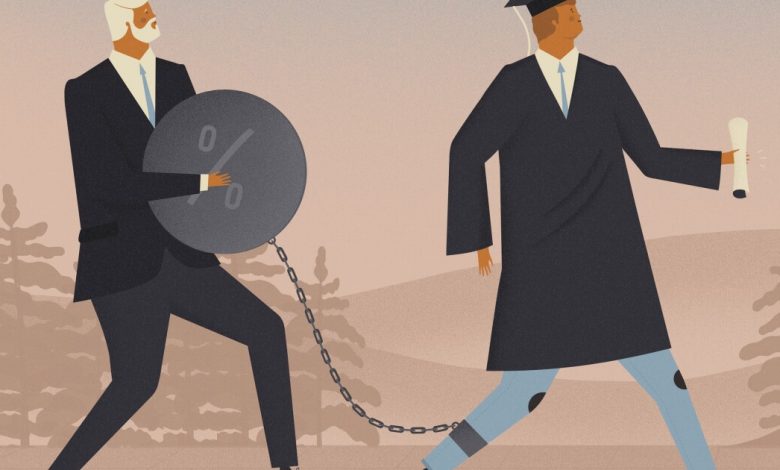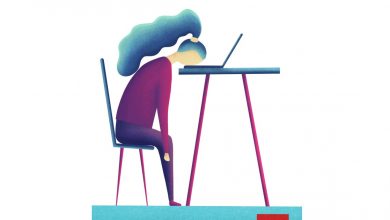Expect Defaults to Surge When Student-Loan Repayments Resume, Warns N.Y. Fed

[ad_1]
Amid calls to extend the two-year pause on the repayment of federally held student loans, researchers at the Federal Reserve Bank of New York predict in a report released this week that borrowers are likely to struggle financially once forbearance ends, resulting in “a meaningful rise in delinquencies, both for student loans and for other debt.“ Other research suggests as many as 7.8-million borrowers — nearly three in 10 — are at “high risk” of missing payments once the federal government lifts its repayment moratorium.
Since March 2020, nearly 37 million borrowers have not needed to make monthly payments toward their federal student loans (known as Direct Loans), a move resulting in more than $195 billion of relief for these consumers, Fed researchers estimate.
To better understand what this group of borrowers might experience when the repayment pause ends, the New York Fed researchers analyzed a different set of student-loan borrowers — those indebted to the private funders of federally backed student loans. These borrowers, whose loans were unaffected by the federal intervention, struggled to keep up with payments, the Fed researchers found. And by the end of 2021, delinquency rates for these borrowers had returned to prepandemic levels.
“We find that these borrowers experienced 33-percent higher delinquency on their nonstudent, nonmortgage debt after exiting forbearance than the Direct borrowers who remained in forbearance,” the Fed researchers wrote.
Lobbying the federal government to take additional action on student loans has only intensified as the clock ticks down to May 1, when the federal moratorium is set to be lifted. On Monday, 43 Democrats in the U.S. House of Representatives pressed the White House to extend the pause on repayments “at least through the end of this year,” and past what is expected to be a difficult midterm cycle for their party. Progressives have called on President Biden to go even further, and unilaterally forgive all student debt owed to the U.S. Department of Education.
At the California Policy Lab, a research institute based at the University of California, analysts found that the credit scores of borrowers affected by the pause on student-loan repayment rose by an average of 28 points between January 2020 and December 2021, because the moratorium enabled many of them to increase repayment of other loans and credit-card debt, with even larger gains enjoyed by those with subprime credit scores (those with credit ratings from 300 to 600).
The 7.8 million borrowers considered at “high risk” of struggling once student-loan repayments resume were also more likely to live in neighborhoods with high proportions of Black residents.
But while the government’s suspension of payments may have yielded more than $195 billion in savings for borrowers, advocates for a resumption of payments — like the Committee for a Responsible Federal Budget — argue that relief has disproportionately benefited those borrowers with the largest debt loads: recent law- and medical-school graduates, who are anticipated to earn a median of $3.6 million in compensation over the course of their lifetimes. The committee calculated that the suspension of interest accumulation during the past two years, in tandem with inflationary effects, has effectively resulted in $48,500 and $29,500, respectively, in student-loan debt being canceled for M.D.- and J.D.-degree holders. In contrast, graduates with bachelor’s degrees received the equivalent of just $4,500 in canceled debt.
[ad_2]
Source link






